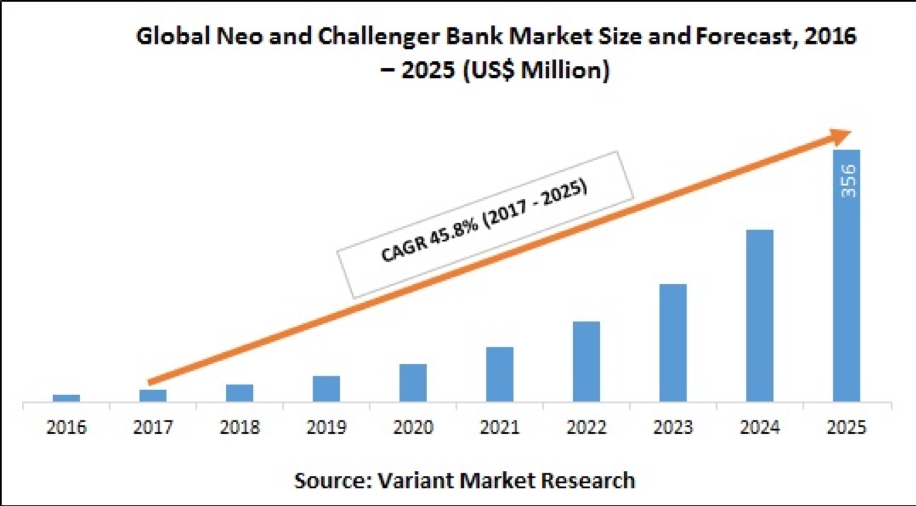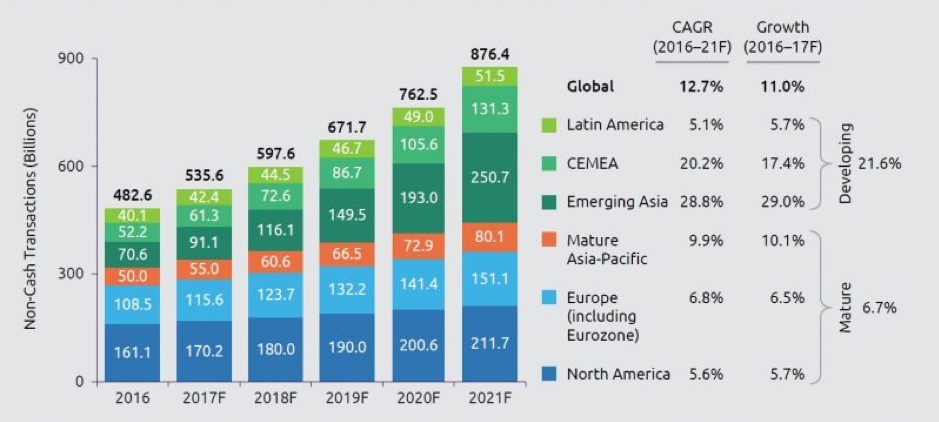“When digital transformation is done right, it’s like a caterpillar turning into a butterfly. But when done wrong, all you have is a really fast caterpillar.”
— George Westerman, principal research scientist with the MIT Sloan Initiative on the Digital Economy
Money management patterns have evolved to such a degree that people want nothing less than financial flexibility and convenience. Status quo in the modern landscape is exactly what puts financial entities at risk. The players within the end-client ecosystem have different exposure degrees to digital trends. Businesses, governments and transactional banks have a certain level of tech adoption. Some are digitally-powered and drive the first benefits from data, while others still do not break their bond with the manual approach.
At the beginning of 2019, only 37% of banks had their digital presence as a top priority (Cornerstone Advisors report). The roots of these figures can be found in the C-suite: the dominant majority of the executives had zero tech experience throughout their careers.
Staying relevant literally means adherence to current developments in the global financial arena. Delivery of change and new customer experiences demand sufficient competence as well as an ability to think way ahead. Digital ecosystems will be increasingly responsible for financial transactions within the next few years. The way in which an entity grabs the opportunities provided by tech, and builds its strategic vision around them, will define its viability and success.
Current digital climate in finance
Neobank is the phenomenon that merits attention: it disrupts the historically bureaucratic financial domain given that it is 100% digital and mobile. First and foremost, we have to understand the nature of neobanking, define what it is, and more importantly — what it isn’t.
A digital front end added to a traditional bank is not neobanking. A digital interface connecting banks with their clients does not refer to neobanking either. We are talking about a new system that reinvents traditional banking processes as we know them.
Neobanks operate on the basis of a marketplace model offering client-centric products and increased level of integrations. The major difference between traditional banks and neobanks is that the latter serve a far broader customer segment and satisfy a far broader set of requirements.
That is, the marketplace business model implies third-party integration via APIs — insurance vendors, loans, etc. Literally, it is much more than traditional banking has been able to offer. Being autonomous and data-driven in their decision-making, neobanks are rapidly growing in both developed and emerging markets. The growth potential is huge.

Source: Variant Market Research
Neobanking projects are being developed in emerging markets. In doing so we realize the necessity to seize the opportunity and adopt the best global practices. At the same time, there is an understanding of how different user behaviour patterns are. On the one hand, customers are less used to cashless payments and still trust cash more. On the other hand, they are ready to embrace new technologies. Specifically, developing markets are actually driving cashless growth.

Source: World Payments Report
In fact, in emerging markets such as central Asia, banks have the chance to skip several phases — when digital payments have already prepared the ground. In a vast number of developing countries, clients of financial institutions are used to cards and even remote, smaller cities have ATMs and branches. Thus, banks can skip the branch stage and proceed directly to the neobank model.
The time of the traditional business model, where monolithic banks developed and sold their own products/services, are gone. The emergence of an ecosystem-based platform business model involves non-financial partners, third-party channels that add new options, and going beyond banking operations as we know them. The customer journey starts much earlier than the decision to take out a loan — specifically, with the intent to buy, let’s say, a car. Given that, there is an avenue for additional value creation by making those journeys intuitive. Points of convergence with customers are mushrooming, thus, the approach to reinventing the customer journey must be comprehensive and multifaceted. At the same time, the growing number of standalone digital channels is not something customers want to deal with. Providing seamlessness, the integrated experience is a win-win option to consider.
APIs are the appropriate tech enablers for building an ecosystem. Basically, APIs execute the function of a digital bridge: an API economy allows a bank to expand its reach and access the audiences of other domains. The data exchange and connectivity allows for customer acquisition and applying third-party capabilities. Even in the markets where open banking is not mandated normatively, financial entities willingly delve into the API economy. Leveraging analytics and data significantly increases the chance of providing groundbreaking contextual solutions.
In essence, what people need is personalized assistance in complex aspects and personal attention. And this is exactly where Artificial Intelligence can come into play. The only question is how exactly a bank can balance human and digital capabilities — there is a high bar for account opening tools, one that is really hard to reach.
Major areas of concern
Big data is a valuable asset that can make personalized service and superior UX happen. Though, the trick is not in data itself; it is in exactly how a business can capitalize on it. Leveraging big data in the banking industry allows entities to see the big picture of a business, and to execute internal process optimization. On the other hand, this powerful asset is vulnerable. The dependency on legacy systems makes it impossible to cope with massive workflows. In terms of its amount, big data is growing bigger on a daily basis. It means businesses have to deploy data analytics to a greater extent in order to sort the wheat from the chaff. And ultimately, when there is data, there are those who want to compromise it.
Security spending is expected to reach $133,7 billion by 2022 (Digital Information World). By the very same year, cyber attacks will cost enterprises around $8 trillion (IT Pro Portal). The two opposing dimensions apply the same technologies, the difference is — hackers seem to master them at a faster pace. With the growing reliance on mobile banking, attackers will extensively target this channel. Behavioral biometrics technology is not able to withstand bot attacks. Artificial Intelligence is getting more accessible, making room for new sophisticated attack types. All in all, the statistical data reflects one crucial point: unless an entity is proactive and predictive, there is no way it can survive the attacks.
Governments cannot but influence the financial sphere: a bank exists within the imposed coordinate system with certain outlooks and level of openness to innovation. The same variety pertains to regulatory frameworks across countries. The lack of standardization on data and its usage prevents the digital banking ecosystem from being consistently innovative. There is no global standard for APIs to orchestrate and support them across borders. Banking landscapes are different across regions, and sustainable profitability of each area is challenged by competition, cost and regulatory pressures.
Exploring the opportunities of digital
Being under pressure of the exponentially changing landscape, financial entities are likely to face an identity crisis. The urge of transformation is overwhelming, and a business has to decide upon the appropriate ecosystem. Who to be? An efficient distributor, banking product supplier or customer-centric marketplace? The route to innovation starts with a digital strategy that has zero tolerance for templates, best practices or popular approaches. First and foremost, it is vital to get to the essence of the business and evaluate key competencies, and capabilities. Having a clear comprehension of the latest developments on a global scale, a bank can focus on particular scenarios appropriate for its paradigm.
Embracing digital requires stamina and courage; it is essential to seek opportunities in every difficulty. Let's face it: the digital talent gap is the exact issue to be tackled in the first place. Over 50% of surveyed businesses agree that digital talent shortage is what stagnates innovation and makes entities lose a competitive advantage (Capgemini). As long as innovation is driven by people, much attention has to be paid to corporate training programs, L&D initiatives and education in general. Within the next few years, there will be a huge demand for data scientists, full stack developers, data architects, etc. Businesses must be wise in terms of engaging digital talent and retaining it.
Customer development plays a very significant role at all stages of digital product development — beginning with the discovery phase. Prior to the start of the development stage, our team necessarily travels to the country in question to carry out extensive research, communicate with the target audience, and learn its pain points and needs. The team includes a product manager, designer and business analyst. This allows us to align the client’s business goals and end user requirements.
Open banking as a phenomenon creates prerequisites for partnerships; fruitful collaboration is the one that enables mutual growth. It may seem surprising, but SMEs make up 99% of firms that create value and provide employment (EY). The majority of them are fintech companies that are responsible for digital changes. Partnering with them brings sought after agility and fresh perspective, not to mention valuable insights. Also, gaining access to valuable data evokes the importance of KYC data sharing. One of the top priorities for digital banking is ensuring digital trust. The deployment of KYC processes help risk mitigation and enhance customer experience.
Looking into the near future of money management, we expect dissemination of the super application model, which has had massive popularity in Eastern markets. The super app framework combines hundreds of institutions in the fields of wealth management, insurance and security. This singularity changes the way people consume services; in this new reality 'bank' is a verb, and customers feel the need 'to bank' at their convenience.
